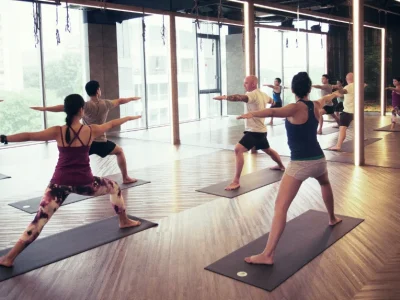
Returning to running after an injury can be frustrating. Many athletes are eager to resume their normal mileage but rushing back often results in setbacks. The key to a safe return is maintaining cardiovascular fitness while protecting injured joints or tissues. An indoor spin class provides the perfect solution. It delivers aerobic training with minimal impact, allowing you to stay conditioned while gradually rebuilding run volume.
This article outlines a twelve-week cross-training plan that integrates spinning and running. It is designed for runners recovering from injuries like shin splints, IT band syndrome, or plantar fasciitis, as well as those who have taken a long break.
Why Spin is Ideal for Runners in Recovery
Running is a high-impact sport, with each stride producing ground reaction forces of two to three times bodyweight. Cycling, on the other hand, is low-impact. It allows you to stress the cardiovascular system without pounding the joints.
Key benefits of spin for runners:
-
Cadence similarity: Spin cadence translates well to running turnover.
-
Controlled load: Resistance can be adjusted instantly to match fitness and recovery.
-
Safe environment: No risk of tripping or surface impact.
-
Mental engagement: Group classes mimic the rhythm of a running community.
Spin is not a replacement for running, but it is the best bridge back to it.
Screening Before Starting the Plan
Before attempting a structured programme, runners should clear three checkpoints:
-
Pain-free walking: You should be able to walk briskly without pain.
-
Basic strength: Single-leg squats and calf raises should feel stable.
-
Medical clearance: Especially after surgery or long-term injury.
Once these are confirmed, you can begin a structured plan that gradually reintroduces running.
Mapping Spin Cadence to Running Turnover
Running cadence typically ranges from 160–180 steps per minute. Spinning at 80–90 RPM equates to about 160–180 foot strikes per leg, making it an ideal training tool.
-
80 RPM: Mimics easy run cadence.
-
90 RPM: Matches moderate running effort.
-
100+ RPM: Simulates strides or faster running turnover.
This connection allows your neuromuscular system to stay tuned to running mechanics even when you are off the road.
Twelve-Week Cross-Training Plan
This plan is divided into three phases, each lasting four weeks. Sessions can be adjusted based on your injury and fitness level.
Phase 1: Foundation (Weeks 1–4)
Goal: Build aerobic fitness without running stress.
-
3 spin sessions per week: 40–50 minutes each, cadence 80–90 RPM, steady pace
-
Strength training: Focus on glutes, hamstrings, calves
-
Optional short jogs: 10–15 minutes, once per week, if pain-free
Phase 2: Transition (Weeks 5–8)
Goal: Reintroduce running volume while maintaining spin fitness.
-
2 spin sessions per week: One endurance ride, one interval session (e.g., 6 x 3 min hard, 2 min easy)
-
2 run sessions per week: Begin with 20 minutes easy, increase by 5 minutes weekly
-
Mobility drills: Hip openers and dynamic stretching after each session
Phase 3: Integration (Weeks 9–12)
Goal: Shift towards more running, using spin for cross-training.
-
1 spin session per week: Intervals to maintain cardiovascular edge
-
3 run sessions per week: Include one long run, one tempo run, one easy run
-
Brick session: 45-minute spin followed by a short jog to prepare for return to full training
By Week 12, most runners are ready to resume a normal running schedule with minimal risk of re-injury.
Common Mistakes Runners Make in Recovery
-
Increasing mileage too fast: Returning too quickly is the leading cause of relapse.
-
Ignoring strength work: Weak hips and glutes increase running injury risk.
-
Skipping recovery days: Rest is crucial when tissues are still adapting.
-
Poor hydration: Spinning in humid conditions can mask dehydration, slowing healing.
Avoiding these mistakes ensures the twelve-week plan delivers results safely.
How TFX Studios Support Recovery
At facilities like TFX Singapore, spin classes are designed with progression in mind. Instructors guide pacing so you avoid overloading. The class variety allows you to choose sessions based on intensity and recovery stage. Early morning and evening schedules also make it easier to stay consistent while balancing physiotherapy, strength training, and gradual run reintroduction.
FAQs on Spin as a Return-to-Run Tool
Q: Can I replace all runs with spin until I am fully pain-free?
A: Yes, spinning maintains aerobic capacity without impact. Once you are symptom-free, start with very short runs alongside spin sessions.
Q: How do I know if I am ready to progress to more running?
A: If you can complete three spin sessions per week without discomfort, and jog 20 minutes pain-free for two consecutive weeks, you are ready to increase running volume.
Q: Should I spin the day after a run?
A: Yes, light spinning at low resistance makes an excellent active recovery session. It promotes blood flow and reduces soreness.
Q: Can spin improve my running form?
A: Indirectly, yes. By reinforcing cadence, hip stability, and aerobic strength, it supports efficient running mechanics.
Q: What if my injury flares up again during the plan?
A: Scale back to the previous week’s workload. If pain persists, stop running and continue with spin until cleared again.











